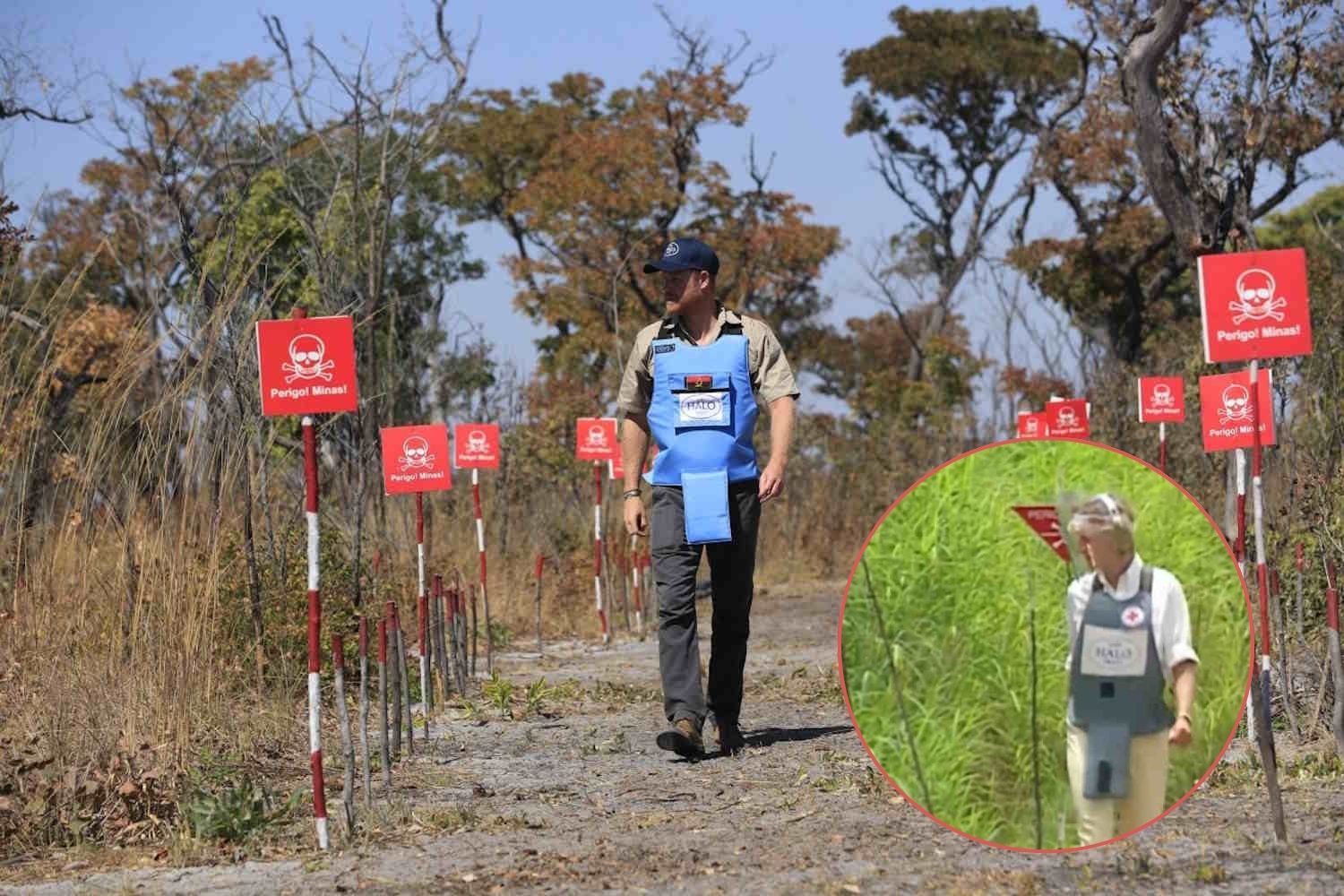Prince Harry returns to Angola to continue Princess Diana’s anti-landmine mission, as global support for the Ottawa Treaty shows worrying signs of retreat.

@The HALO Trust
It’s been nearly three decades since Princess Diana walked through an active minefield in Angola, clad in a ballistic vest, flanked by warning signs with skulls and crossbones. That powerful image—the People’s Princess risking her safety to shed light on the devastating impact of landmines—burned itself into the public consciousness in 1997. And it worked. Months after her death, the Ottawa Convention was signed by 164 countries, banning the use, production, and stockpiling of anti-personnel mines.
But that hard-won progress is now in jeopardy. In a powerful echo of his mother’s act, Prince Harry has returned to Angola, specifically to Cuito Cuanavale, one of the most heavily mined areas remaining in Africa. He’s there not as royalty, but as an advocate—supporting the work of The Halo Trust, the same British demining organization his mother famously championed.
During his visit, Harry took part in the removal of anti-tank mines, an act that may seem symbolic but carries deep political resonance. It comes at a troubling time: Poland, Estonia, Latvia, Lithuania, and Finland have recently pulled out of the Ottawa Convention. Their decision, rooted in security concerns over Russia’s invasion of Ukraine, reopens the door to one of the most indiscriminate and inhumane weapons modern warfare has ever known.
🇦🇴 “Children should never have to live in fear of playing outside or walking to school. The Angolan government’s…
Posted by The HALO Trust on Wednesday, July 16, 2025
Landmines don’t discriminate
As Harry’s quiet defiance reminds us, the danger isn’t over. Far from it. According to the 2023 Landmine Monitor, at least 60 countries are still contaminated by landmines or unexploded ordnance (UXO). Some of the most severely affected include Afghanistan, Yemen, Syria, Myanmar, Colombia, Cambodia, Ukraine, Angola, and Iraq.
What makes landmines especially cruel is that they do not recognize ceasefires. They lie hidden, long after the soldiers have gone, waiting to kill or mutilate civilians—often children—decades after peace is declared. In Angola alone, since 2008, more than 60,000 people have been killed or injured by mines. And despite aggressive clearance campaigns, the country has seen at least 80 mine-related deaths in the last five years.
The world had once converged, however imperfectly, on the basic idea that civilians deserve protection. The Ottawa Convention was more than just ink on paper; it was a fragile but essential agreement that put empathy above strategy. With recent developments in Eastern Europe, that empathy is under siege.
Memory is a political act
In this climate, Harry’s return to the minefields isn’t just nostalgia—it’s resistance. He’s not a policymaker, but he understands the power of visibility. And just like Diana before him, he’s willing to stand in the blast zone of history to make a point.
“I’m incredibly proud of what my mother started,” Harry said during his visit. “And I’m humbled to be able to carry that work forward.”
It’s easy to forget, especially in a world awash with new crises, that some of the worst threats are the ones buried beneath our feet, silent and unseen. Yet Harry’s gesture serves as a poignant reminder: empathy still has weight, and memory can still move hearts—if we choose to listen.
Source: The HALO Trust
